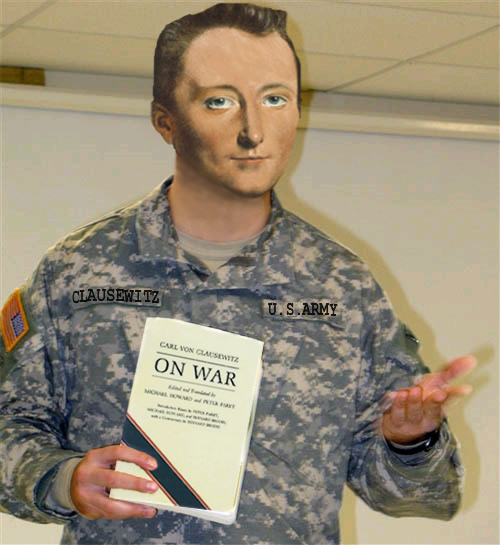Themes and passages scattered throughout Book 2 reminded me of themes and passages scattered throughout mad prophet Nassim Nicholas Taleb’s The Black Swan. Both Book 2 and the The Black Swan detail the ways humans fool themselves, sometimes in disproportionately disastrous ways. Both preach a critical and conservative empiricism in the face of a baffling and shifting world. Both use some of the same empirical techniques, in Clausewitz’s case two hundred years too early.
One of Taleb’s main themes is the tendency for specialists in any field to develop physics envy and attempt to reduce the horrifically complex phenomena they study to a deterministic and mechanistic model complete with grand and complex equations. This envy doesn’t lead to a higher level of truth and accuracy. It leads to a higher level of systemic self-deception and delusion. It creates financial weapons of mass destruction such as an MBA armed with a spreadsheet and the belief that manipulating rows and columns bestows the ability to prophesy. Vain dreams.
Clauswitz joins Taleb in explaining why this delusion will lead to ruin:
The essential difference is that war is not an exercise of the will directed at inanimate matter, as is the case with the mechanical arts, or at matter that is animate but passive and yielding, as is the case with the human mind and emotions in the fine arts. In war, the will is directed at an animate object that reacts. It must be obvious that the intellectual codification used in the arts and sciences is inappropriate to such an activity. At the same time it is clear that continual striving after laws analogous to those appropriate to the realm of inanimate matter was bound to lead to one mistake after another. Yet it was precisely the mechanical arts that the art of war was supposed to imitate. The fine arts were impossible to imitate, since they themselves do not yet have sufficient laws and rules of their own. So far all attempts at formulating any have been found too limited and one-sided and have been constantly been undermined and swept away by the currents of opinion, emotion and custom.
You can see Clausewitz calling out Jomini here, since Jomini tried (and failed) to reduce war to a science that followed predictable and universal principles (see Clausewitz’s picking on Jomini’s beloved interior lines for a specific example). Many died in the Civil War because of Jomini and his perverse inspiration (they may also have been killed by a second generation of warfare but rifles, Minié balls, and Napoleon guns are a poor defense against an out-of-control theory straining for relevance or killer generations). For those that disbelieve that military theory can’t kill, Clausewitz provides warnings a plenty.
Read more
